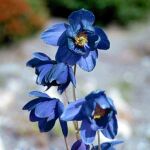| Drug Interactions: |
| Taking cola with these drugs may have an unpredicatable effect on blood sugar levels: |
| Acarbose, (Prandase, Precose) |
Acetohexamide, (Acetohexamide) |
Chlorpropamide, (Diabinese, Novo-Propamide) |
Glicalzide, (Diamicron, Novo-Gliclazide) |
| Glimepiride, (Amaryl) |
Glipizide, (Glucotrol) |
Glipizide and Metformin, (Metaglip) |
Gliquidone, (Beglynor, Glurenorm) |
| Glyburide, (DiaBeta, Micronase) |
Glyburide and Metformin, (Glucovance) |
Insulin, (Humulin, Novolin R) |
Metformin, (Glucophage, Riomet) |
| Miglitol, (Glyset) |
Nateglinide, (Starlix) |
Pioglitazone, (Actos) |
Repaglinide, (GlucoNorm, Prandin) |
| Rosiglitazone, (Avandia) |
Rosiglitazone and Metformin, (Avandamet) |
Tolazamide, (Tolinase) |
Tolbutamide, (Apo-Tolbutamide, Tol-Tab) |
| Taking cola with these drugs may increase the risk of side effects due to a buildup of caffeine in the body: |
| Cimetidine, (Nu-Cimet, Tagamet) |
Cinoxacin, (Cinobac) |
Ciprofloxacin, (Ciloxan, Cipro) |
Disulfiram, (Antabuse) |
| Ephedrine, (Pretz-D) |
Ergotamine, (Cafergor, Cafergot) |
Estrogens (Conjugated A/synthetic), (Cenestin) |
Estrogens (Conjugated/Equine), (Congest, Premarin) |
| Estrogens (Conjugated Equine) and Medroxyprogesterone, (Premphase, Prempro) |
Estrogens (Esterified), (Estratab, Menest) |
Estrogens (Esterified) and Methyltestosterone, (Estratest, Estratest H.S.) |
Ethinyl Estradiol and Desogestrel, (Cyclessa, Ortho-Cept) |
| Ethinyl Estradiol and Ethynodiol Diacetate, (Demulen, Zovia) |
Ethinyl Estradiol and Etonogestrel, (NuvaRing) |
Ethinyl Estradiol and Levonorgestrel, (Alesse, Triphasil) |
Ethinyl Estradiol and Norelgestromin, (Evra, Ortho Evra) |
| Ethinyl Estradiol and Norethindrone, (Brevicon, Ortho-Novum) |
Ethinyl Estradiol and Norgestimate, (Cyclen, Ortho Tri-Cyclen) |
Ethinyl Estradiol and Norgestrel, (Cryselle, Ovral) |
Fluconazole, (Apo-Fluconazole, Diflucan) |
| Fluvoxamine, (Alti-Fluvoxamine, Luvox) |
Gatifloxacin, (Tequin, Zymar) |
Gemifloxacin, (Factive) |
Levofloxacin, (Levaquin, Qiuxin) |
| Lomefloxacin, (Maxaquin) |
Mestranol and Norethindrone, (Necon 1/50, Ortho-Novum 1/50) |
Mexiletine, (Mextil, Novo-Mexiletine) |
Moxifloxacin, (Avelox, Vigamox) |
| Nalidixic Acid, (NegGram) |
Norfloxacin, (Apo-Norflox, Noroxin) |
Ofloxacin, (Floxin, Ocuflox) |
Pefloxacin, (Peflacine, Perflox) |
| Riluzole, (Rilutek) |
Sparfloxacin, (Zagam) |
Terbinafine, (Lamisil, Lamisil AT) |
Trovafloxacin, (Trovafloxacin) |
| Verapamil, (Calan, Isoptin SR) |
| Taking large amounts of cola with these drugs may increase the risk of hypertension (high blood pressure): |
| Ephedrine, (Pretz-D) |
Iproniazid, (Marsilid) |
Moclobemide, (Alti-Moclobemide, Nu-Moclobemide) |
| Phenelzine, (Nardil) |
Selegiline, (Eldepryl) |
Tranylcypromine, (Parnate) |
| Taking cola with these drugs may increase central nervous system stimulation: |
| Albuterol, (Proventil, Ventolin) |
Clobenzorex, (Asenlix) |
Diethylpropion, (Tenuate) |
Epinephrine, (Adrenalin, EpiPen) |
| Fenoterol, (Berotec) |
Modafinil, (Alertec, Provigil) |
Phentermine, (Adipex-P, Ionamin) |
Pseudoephedrine, (Dimetapp Decongestant, Sudafed) |
| Taking cola with thses drugs may cause or increase gastrointestinal irritation: |
| Celecoxib, (Celebrex) |
Ibuprofen, (Advil, Motrin) |
Indomethacin, (Indocin, Novo-Methacin) |
Ketoprofen, (Orudis, Rhodis) |
| Ketorolac, (Acular, Toradol) |
Naproxen, (Aleve, Naprosyn) |
Piroxicam, (Feldene, Nu-Pirox) |
Rofecoxib, (Vioxx) |
| Taking cola with these drugs may interfere with the absorption of the drug: |
| Alendronate, (Novo-Alendronate, Fosamax) |
Amitriptyline, (Elavil, Levate) |
Amitriptyline and Chlordiazepoxide, (Limbitrol) |
Amitriptyline and Perphenazine, (Etrafon, Triavil) |
| Amoxapine, (Asendin) |
Chlorpromazine, (Largactil, Thorazine) |
Clomipramine, (Anafranil, Novo-Clopramine) |
Desipramine, (Alti-Desipramine, Norpramin) |
| Doxepin, (Sinequan, Zonalon) |
Fluphenazine, (Modecate, Prolixin) |
Imipramine, (Apo-Imipramine, Tofranil) |
Lofepramine, (Feprapax, Gamanil) |
| Melitracen, (Dixeran) |
Mesoridazine, (Serentil) |
Nortriptyline, (Aventyl HCl, Pamelor) |
Perphenazine, (Apo-Perphenazine, Trilafon) |
| Prochlorperazine, (Compazine, Compro) |
Promethazine, (Phenergan) |
Protriptyline, (Vivactil) |
Thiethylperazine, (Torecan) |
| Thioridazine, (Mellaril) |
Thiothixene, (Navane) |
Trifluoperazine, (Novo-Trifluzine, Stelazine) |
Trimipramine, (Apo-Trimip, Surmontil) |
| Taking Cola with these drugs may be harmful: |
| Alendronate, (Fosamax, Novo-Alendronate)—May reduce drug effectiveness |
Clozapine, (Clozaril, Gen-Clozapine)—May cause increased psychotic symptoms |
Dipyridamole, (Novo-Dipiradol, Persantine)—May reduce drug effectiveness |
| Ergotamine, (Cafergor, Cafergot)—May increase drug absorption |
Etodolac, (Lodine, Utradol)—May increase risk of liver damage |
Lithium, (Carbolith, Eskalith)—May cause drug levels in the body to rise, heightening "lithium tremor", when high amounts of caffeine are taken over time and suddenly stopped. |
| Riluzole, (Rilutek)—Increases risk of drug side effects |
Selegiline, (Eldepryl)—May increase risk of arrhythmia (irregular heartbeat) |
Theophylline, (Elixophyllin, Theochron)—May increase toxic effects of the drug |
|

